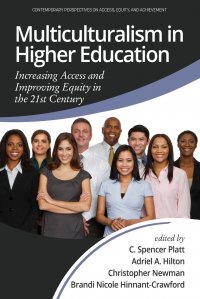As the educational landscape of America continues to evolve and diversify, college faculty and administrators must be cutting edge in their approaches to create a variety of educational experiences with a greater level of multicultural cognizance. Unlike in previous generations, higher education in the 21st Century is no longer a luxury reserved for the elite and wealthy, but is an increasing necessity for access to labor markets. Community colleges and universities are working hard to respond to the demands of the labor market, by attempting to provide skills for jobs that may not yet exist. Colleges and universities should aim to make all of their students feel welcome and a part of the campus being committed to celebrating differences. Additionally, filling faculty seats with varied races, cultures, perspectives and identities will aid in providing mentors and role models everyone can relate to. These are some of the vital steps toward building a campus community that helps students develop a sense of belonging that allows them to persist and thrive in college.The scholarship in this volume illustrates the state of multicultural education on college and university campuses. The authors bridge foundational knowledge with contemporary understandings; making the work both accessible for novices and beneficial for the authorities on multicultural education. This volume provides thoughtful discourse on issues ranging from the racial and ethnic diversity of the student and faculty bodies, and important topics like disability issues, to different educational contexts such as community colleges, HBCUs and HSI institutions. Это и многое другое вы найдете в книге Multiculturalism in Higher Education. Increasing Access and Improving Equity in the 21st Century (C. Spencer Platt, Adriel A. Hilton, Christopher Newman)
Multiculturalism in Higher Education. Increasing Access and Improving Equity in the 21st Century Christopher Newman, C. Spencer Platt, Adriel A. Hilton
Подробная информация о книге «Multiculturalism in Higher Education. Increasing Access and Improving Equity in the 21st Century Christopher Newman, C. Spencer Platt, Adriel A. Hilton». Сайт не предоставляет возможности читать онлайн или скачать бесплатно книгу «Multiculturalism in Higher Education. Increasing Access and Improving Equity in the 21st Century Christopher Newman, C. Spencer Platt, Adriel A. Hilton»
